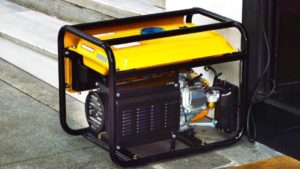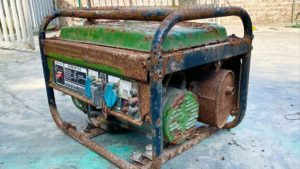When it comes to off-grid systems, protecting your investment is important.
With the increasing popularity of renewable energy sources, there is a growing demand for reliable and safe systems that can power our homes and businesses efficiently.
One essential component of any off-grid system is an inverter, which converts DC power from solar panels or wind turbines to AC power used in households and industries.
However, without proper protection features, your inverter could fail due to fluctuating input voltages, overloads, or electrical surges, leading to costly repairs or even total system failure.
We’ll explore some important inverter protection features that help you keep your off-grid system safe and running smoothly for years to come.
From advanced MPPT algorithms to anti-islanding mechanisms, these features will give you the peace of mind knowing your investment is well-protected and performing at its best.
Overvoltage Protection
Inverters are equipped with overvoltage protection features to prevent damage to the system due to excessive voltage generated by solar panels or wind turbines. This feature can help prevent damage to the inverter and other system components.
When the voltage output of the solar panels or wind turbines exceeds the rated voltage of the inverter, the overvoltage protection kicks in to prevent any damage to the system components.
This feature is particularly useful during periods of high wind or solar irradiance, when the voltage output of the renewable energy source may exceed the rated voltage of the inverter.
Inverters equipped with overvoltage protection features can detect when the voltage output of the renewable energy source is too high and take corrective action to prevent damage to the system.
This can include reducing the power output of the inverter, disconnecting the system from the grid, or even shutting down the inverter altogether.
By preventing damage to the system components, overvoltage protection features help ensure the long-term reliability and performance of the renewable energy system.
When selecting an inverter for a renewable energy system, it is essential to look for a model that includes overvoltage protection features.
This can help prevent costly repairs and replacement of system components, and ensure that the system operates at peak efficiency and reliability over the long term.
Some inverters may offer adjustable overvoltage protection settings, allowing system operators to customize the level of protection based on their specific needs and system configuration.
By prioritizing overvoltage protection features in their inverter selection, system operators can help ensure the optimal performance and longevity of their renewable energy system.
Undervoltage Protection
Inverters also have undervoltage protection features that prevent the system from operating during periods of low voltage, which can damage the system components or cause them to fail.
Undervoltage protection is a important feature of inverters that ensures the system’s components are safe from damage during periods of low voltage.
When the input voltage falls below a certain threshold, the inverter will disconnect the load from the power source to prevent any damage or failure of the system components.
This feature is especially important for applications that require a stable and consistent voltage supply, such as hospitals, data centers, and other mission-critical facilities.
Without undervoltage protection, a drop in input voltage could cause the inverter to output a low voltage or even fail entirely, leading to costly repairs or equipment replacement.
By incorporating undervoltage protection into their design, inverters can provide a reliable and secure power supply for a wide range of applications.
Overcurrent Protection
Inverters have overcurrent protection features that prevent excessive currents from flowing through the system, which can damage the inverter or other system components.
Overcurrent protection is a important feature in modern inverters that prevents excessive currents from flowing through the system, thereby protecting the inverter and other system components from damage.
When the current exceeds the rated value, the inverter’s overcurrent protection mechanism kicks in and takes corrective action to prevent any further damage.
This feature is particularly important in applications where the load current can vary widely, such as in electric vehicles or renewable energy systems.
By implementing overcurrent protection, inverters can safely operate within their maximum rated current limits, ensuring long-term reliability and preventing costly repairs or replacements.
Overcurrent protection can help to prevent damage to other system components, such as cables, connectors, and batteries, which can extend the overall lifespan of the system.
Overcurrent protection is an essential feature in inverter design, and it is important for ensuring safe and reliable operation in a wide range of applications.
Grounding Protection
Grounding protection features in inverters help prevent dangerous ground currents from flowing through the system, which can damage the system components or cause safety hazards.
Grounding protection is a critical feature in modern inverters that helps prevent dangerous ground currents from flowing through the system, thus safeguarding the components and ensuring safety.
Grounding currents can occur due to various factors such as lightning strikes, improper wiring, or electromagnetic interference.
These currents can cause significant damage to the inverter and other system components, leading to costly repairs or even safety hazards.
To address this issue, inverters are equipped with grounding protection features that detect and neutralize ground currents.
The grounding protection features in inverters typically include ground detection and ground fault detection.
Ground detection detects the presence of a ground fault, while ground fault detection detects the magnitude of the fault.
When a ground fault is detected, the inverter’s grounding protection system can take action to isolate the fault and prevent damage to the system.
This can involve disconnecting the ground fault, or switching to a backup power source.
By incorporating grounding protection features, inverters can help protect against ground currents and ensure a safe and reliable power supply.
This is especially important in applications where the system is exposed to harsh environmental conditions or where the risk of ground faults is high.
For example, inverters used in industrial settings, such as factories or warehouses, may require additional grounding protection features to ensure the safe and reliable operation of the system.
Inverters used in outdoor settings, such as solar farms or wind turbines, may require grounding protection features to protect against lightning strikes and other environmental hazards.
Overall, grounding protection is an essential feature in modern inverters, and its importance cannot be overstated.
Isolation Protection
Inverters are equipped with isolation protection features that prevent dangerous voltages from flowing between the grid and the inverter, ensuring the safety of system operators and maintenance personnel.
Isolation protection is a important aspect of inverter design, as it prevents dangerous voltages from flowing between the grid and the inverter, thereby ensuring the safety of system operators and maintenance personnel.
Modern inverters are equipped with advanced isolation protection features that minimize the risk of electrical shock, arc flash, and other hazards associated with working on high-voltage equipment.
These features include galvanic isolation, which physically separates the grid and inverter sides of the system, and voltage detection and monitoring systems that can detect and respond to changes in voltage levels.
Many inverters feature auto-isolation functions that can disconnect the grid side of the system in the event of a fault or malfunction, preventing dangerous voltages from flowing between the grid and the inverter.
By incorporating isolation protection features into their designs, inverter manufacturers can significantly improve the safety of their products and provide peace of mind for system operators and maintenance personnel.
Short-Circuit Protection
Short-circuit protection features in inverters prevent dangerous short circuits from occurring in the system, which can damage the inverter or other system components.
Short-circuit protection is a critical safety feature that is built into modern inverters.
This feature is designed to prevent dangerous short circuits from occurring in the system, which can damage the inverter or other system components.
When a short circuit occurs, the inverter’s short-circuit protection mechanism quickly detects the condition and interrupts the power supply to the circuit.
This helps prevent damage to the inverter and other system components, such as the solar panels, batteries, and electrical wiring.
The short-circuit protection mechanism in inverters typically uses a combination of techniques to detect and interrupt short circuits.
These techniques may include
* Overcurrent protection: This feature detects when the current flowing through the inverter exceeds a safe level and interrupts the power supply to prevent a short circuit.
* Overvoltage protection: This feature detects when the voltage applied to the inverter exceeds a safe level and interrupts the power supply to prevent a short circuit.
* Ground fault detection: This feature detects when there is a fault in the grounding system and interrupts the power supply to prevent a short circuit.
In addition to these features, some inverters may also include additional short-circuit protection measures, such as
* Arc fault detection: This feature detects when an arc fault occurs in the system and interrupts the power supply to prevent a short circuit.
* Short-circuit response time: This feature determines how quickly the inverter responds to a short circuit and interrupts the power supply.
By incorporating these short-circuit protection features, inverters can help ensure the safety and reliability of the solar power system, protecting against the risks of short circuits and preventing costly damage to system components.
Earth Leakage Protection
Earth leakage protection features in inverters prevent dangerous leakage currents from flowing through the system, which can damage the inverter or other system components.
Earth leakage protection is a critical feature in modern inverters that prevents dangerous leakage currents from flowing through the system, which can damage the inverter or other system components.
When an earth fault occurs, the inverter’s earth leakage protection mechanism quickly detects and interrupts the flow of current to prevent any further damage.
This feature is particularly important in installations where the system is exposed to harsh environmental conditions or where there is a risk of earth faults, such as in off-grid systems or in systems with long cable runs.
By preventing earth leakage currents, the inverter’s Earth Leakage Protection feature ensures the safety and reliability of the system, thereby extending the life of the components and reducing the risk of costly repairs or replacement.
This feature can also help prevent electrical shock and other hazards that can arise from earth faults.
With Earth Leakage Protection, installers and system owners can rest assured that their system is well-protected and safe from potential hazards.
Communication Protection
Communication protection features in inverters prevent unauthorized access to the system and ensure the safe communication between the inverter and other system components, such as the monitoring and control system.
Communication protection features in inverters are critical for preventing unauthorized access to the system and ensuring safe communication between the inverter and other system components, such as the monitoring and control system.
These features include secure authentication and encryption protocols that prevent unauthorized access to the inverter’s communication interfaces, such as Ethernet, RS232, or wireless networks.
The inverter’s communication protocols are designed to ensure safe and reliable data exchange between the inverter and other system components, such as the monitoring and control system.
This includes error-checking mechanisms and redundancy protocols to prevent data loss or manipulation.
By implementing these communication protection features, inverter manufacturers can ensure the security and reliability of their systems, protecting against potential cyber threats and maintaining the integrity of the power conversion process.
Want More? Dive Deeper Here!
Hey there! If you’re the type who loves going down the rabbit hole of information (like we do), you’re in the right spot. We’ve pulled together some cool reads and resources that dive a bit deeper into the stuff we chat about on our site. Whether you’re just killing time or super into the topic, these picks might just be what you’re looking for. Happy reading!






